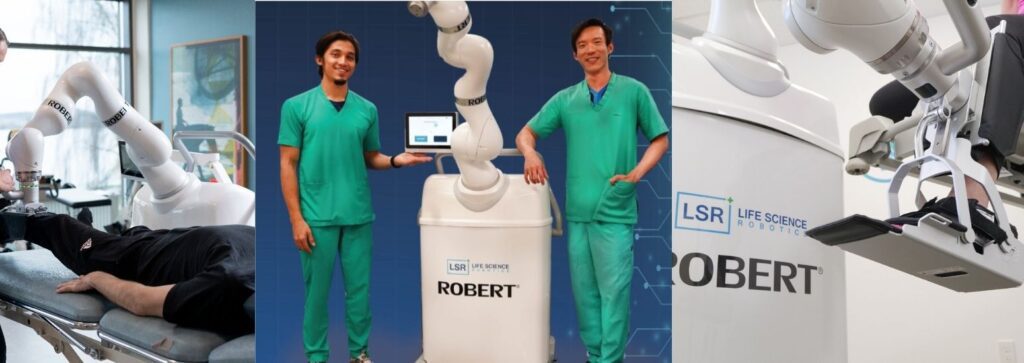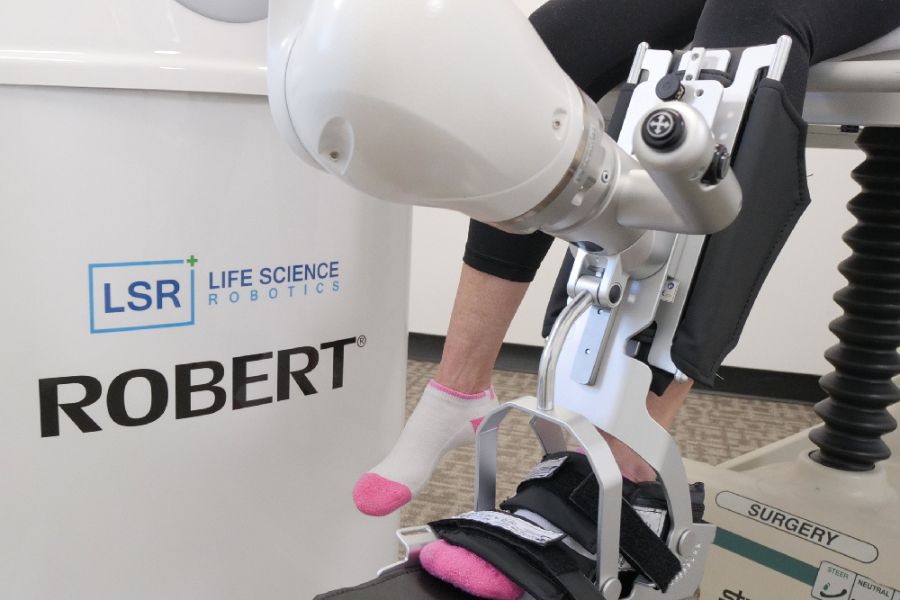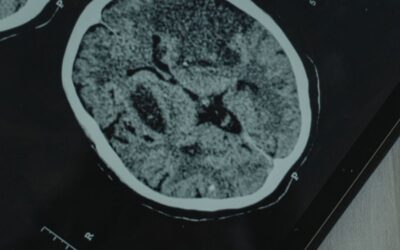Robotics is playing an ever-increasing role in life sciences applications. Life Science Robotics currently focuses on new software upgrades. The latest update included sound effects to make the training even easier.
ROBERT® is an innovative and ground breaking aimed at efficient rehabilitation. Robert is on an important mission to upgrade patients’ early mobilisation to improve the healthcare staff’s working environment and achieve increased patient flow.

How does ROBERT® Operate?
ROBERT® works individually and flexibly and very precisely. It can perform exactly the same movements over and over again – without interruption, fatigue, or time restrictions.
There are two possible ways to use ROBERT® – either for active training or passive training if the patient is still too weak.
Active Mobilisation
- Active Resistive Mobilisation- ROBERT® can perform resistance to any movement, as designed by a healthcare professional.
- Active Assistive Mobilisation—ROBERT® guides the patients through exercise. The patient in turn cooperates with ROBERT®’s movements.
Passive Mobilization
ROBERT® supports the rehabilitation of immobilised patients. Patients with a reduced or inexistent level of function can engage in early recovery.
Treatment-
ROBERT® takes part in the work at hospitals, rehabilitation and nursing homes – more efficient providing patients with increased treatment. The rehabilitation robot makes it possible to treat more than one patient at once. Based on a professional assessment, the healthcare professional plans the exercises of the day to fit the specific patient.
Patients are able to exercise with ROBERT® by themselves at their own pace. The healthcare professional records the correct movements. Up to four successive exercises can be planned which makes for 30-40 minutes of independent training possible for the patient.

Studies have shown that patients’ ability to influence their rehabilitation process, will result in an improved outcome. The exercises are based on the experts’ knowledge, to ensure a qualitative treatment.
Rehabilitation
It is important to initiate early rehabilitation, even though the patient may still be weak and not able to get out of bed by themselves. While the rehabilitation is intensified, the healthcare professionals are relieved from repeated heavy lifting. Through individualised treatments, ROBERT® makes it possible to start the process at a very early stage, which can intensify recovery.
Mobilization and training of hospitalised elderly patients are important for maintaining self-functional ability. Development and testing of innovative methods, including new robot technology, are desirable in order to optimise future treatment and rehabilitation procedures. ROBERT® helps easy movement from one room to another, so the patient can remain in bed during the therapy.

During the therapy, Robert performs a safety test, where the brace is attached to the patient’s lower leg and ROBERT® is rolled up to the bedside, positioned to the patient’s legs.
Now ROBERT® is ready to perform the therapy, in which the patient receives optimal quality training. ROBERT® is instructed by the healthcare professionals to carry out a training exercise. It carries out heavy and repeated lifting during rehabilitation and helps improve the working environment for the physiotherapist to help the patient.
Therefore, enhance early mobilisation and improve effectiveness of treatment.
Connect with us today for a demo at https://rehabmodalities.com/



